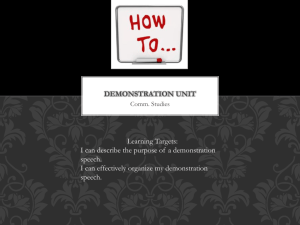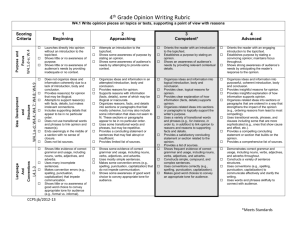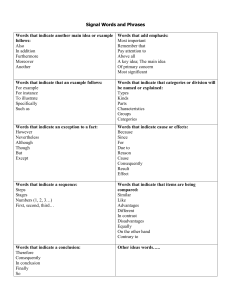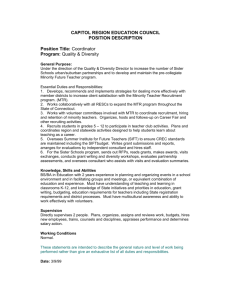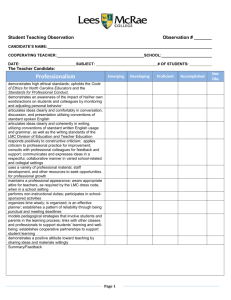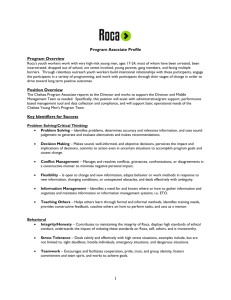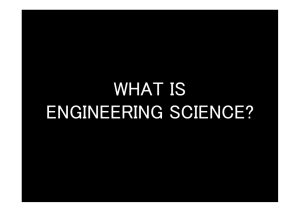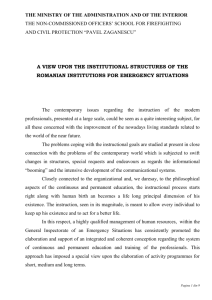TEXT STRUCTURES FOUND IN SOCIAL STUDIES TEXTS
advertisement
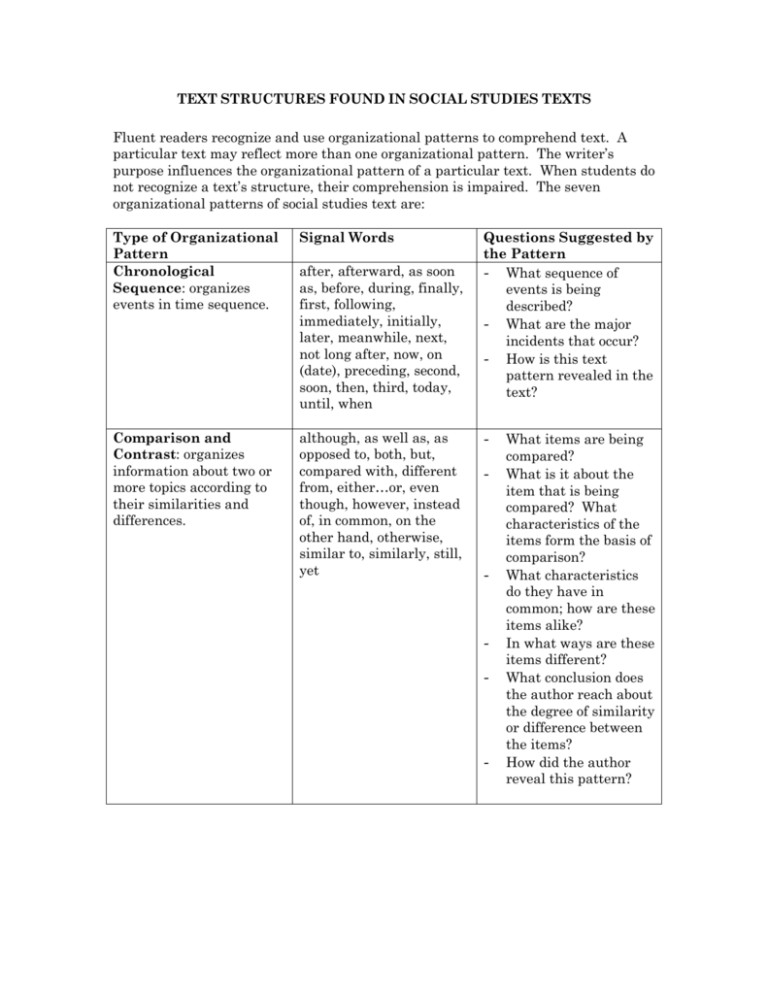
TEXT STRUCTURES FOUND IN SOCIAL STUDIES TEXTS Fluent readers recognize and use organizational patterns to comprehend text. A particular text may reflect more than one organizational pattern. The writer’s purpose influences the organizational pattern of a particular text. When students do not recognize a text’s structure, their comprehension is impaired. The seven organizational patterns of social studies text are: Type of Organizational Pattern Chronological Sequence: organizes events in time sequence. Signal Words Comparison and Contrast: organizes information about two or more topics according to their similarities and differences. although, as well as, as opposed to, both, but, compared with, different from, either…or, even though, however, instead of, in common, on the other hand, otherwise, similar to, similarly, still, yet after, afterward, as soon as, before, during, finally, first, following, immediately, initially, later, meanwhile, next, not long after, now, on (date), preceding, second, soon, then, third, today, until, when Questions Suggested by the Pattern - What sequence of events is being described? - What are the major incidents that occur? - How is this text pattern revealed in the text? - - - - What items are being compared? What is it about the item that is being compared? What characteristics of the items form the basis of comparison? What characteristics do they have in common; how are these items alike? In what ways are these items different? What conclusion does the author reach about the degree of similarity or difference between the items? How did the author reveal this pattern? Concept/ Definition: organizes information about a generalized idea and then presents its characteristics or attributes. for instance, in other words, is characterized by, put another way, refers to, that is, thus, usually - Description: organizes facts that describe the characteristics of a specific person, place, thing or event. above, across, along, appears to be, as in, behind, below, beside, between, down, in back of, in front of, looks like, near, on top of, onto, outside, over, such as, to the right/ left, under - Episode: organizes a large body of information about specific events. a few days/ months later, around this time, as it is often called, as a result of, because of, began when, consequently, first, for this reason, lasted for, led to, shortly thereafter, since then, subsequently, this led to, when - - - What concept is being defined? What are its attributes or characteristics? How does it work, or what does it do? What examples are given for each of the attributes or characteristics? How is this pattern revealed in the text? What specific person, place, thing, or event is being described? What are its most important attributes or characteristics? Would the description change if the order of the attributes were changed? Why is this description important? What event is being described or explained? What is the setting where the event occurs? Who are the major figures or characters that play a part in this event? What are the specific incidents or events that occur? In what order do they happen? What caused this event? What effects has this event had on the people involved? What effects has this event had on society in general? Generalization/ Principle: organizes information into general statements with supporting examples. additionally, always, because of, clearly, conclusively, first, for instance, for example, furthermore, generally, however, if…then, in fact, it could be argued that, moreover, most convincing, never, not only…but also, often, second, therefore, third, truly, typically - - - Process/ Cause and Effect: organizes information into a series of steps leading to a specific product, or into a causal sequence that leads to a specific outcome. accordingly, as a result of, because, begins with, consequently, effects of, finally, first, for this reason, how to, how, if…then, in order to, is caused by, leads/ led to, may be sue to, next, so that, steps involved, therefore, thus, when...then - - What generalizations is the author making or what principle is being explained? What facts, examples, statistics, and expert opinion are given that support the generalization or that explain the principle? Do these details appear in a logical order? Are enough facts, examples, statistics, and expert opinion included to clearly support or explain the generalization/ principle? What process or subject is being explained? What are the specific steps in the process, or what specific causal events occur? What is the product or end result of the process; or what is outcome of the causal events?
